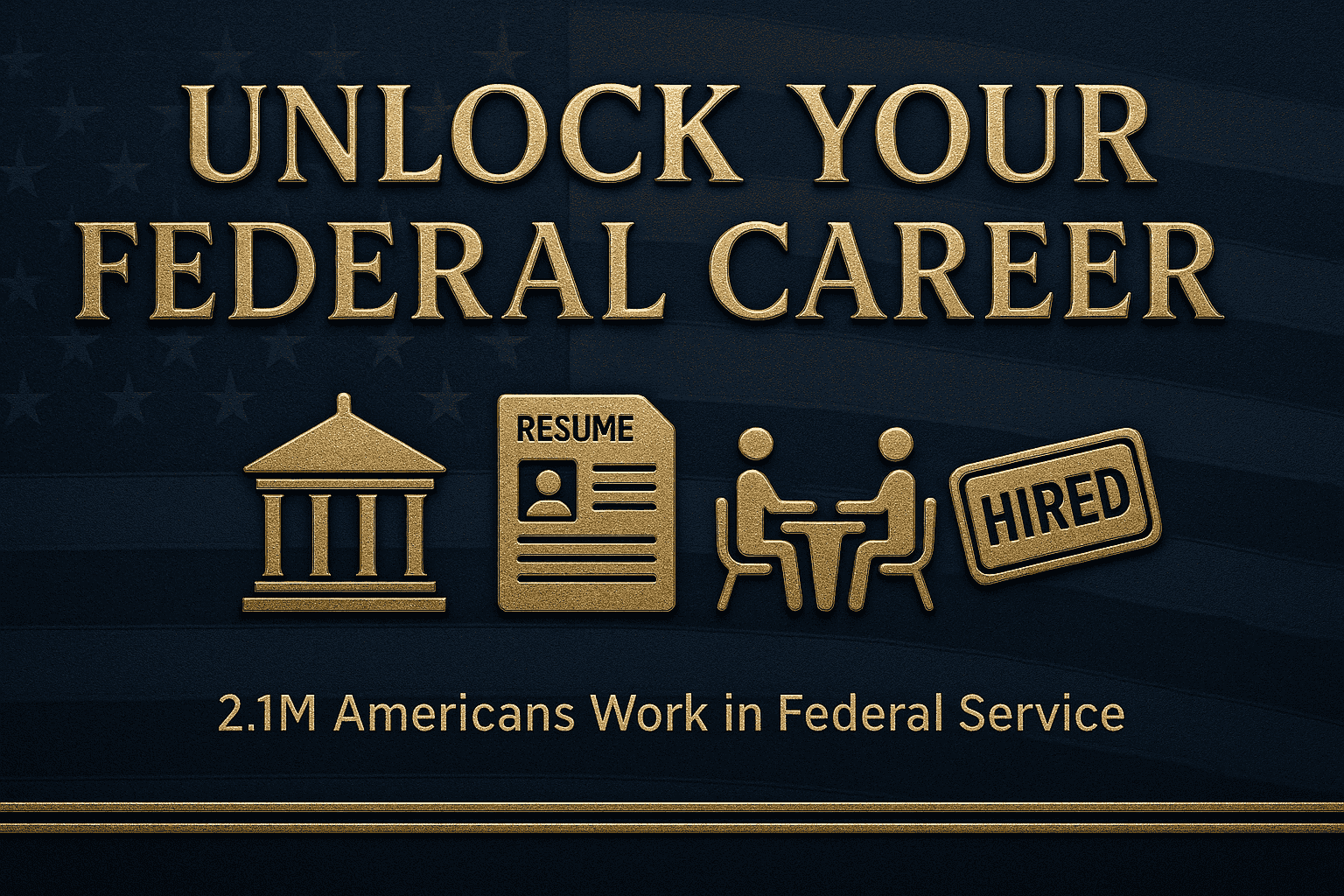Table of Contents
- Introduction to Federal Government Jobs in the USA
- Why Pursue a Federal Government Job?
- Understanding the Federal Job Market Trends
- How to Find Federal Government Jobs
- Step-by-Step Federal Job Application Process
- Writing a Winning Federal Resume
- Crafting a Strong Cover Letter
- Preparing for the Federal Job Interview
- Common Mistakes to Avoid in Federal Job Applications
- FAQs About Federal Government Jobs
- Conclusion
Introduction to Federal Government Jobs in the USA
If you’re looking for a career that offers stability, competitive pay, and meaningful work, federal government jobs in the USA should be at the top of your list. As the nation’s largest employer, the U.S. government provides millions of job opportunities across hundreds of agencies—from the Department of Defense to the Environmental Protection Agency. These roles aren’t just limited to politics or bureaucracy; they span industries like healthcare, cybersecurity, engineering, law enforcement, and environmental science, making them accessible to professionals at every stage of their careers.
Why Federal Jobs Stand Out
Unlike many private-sector positions, federal employment comes with unparalleled job security, even during economic downturns. Government roles are known for their structured pay scales, generous benefits (including health insurance, retirement plans, and paid leave), and opportunities for career advancement. Whether you’re a recent graduate eager to launch your career, a mid-level professional seeking better work-life balance, or a veteran transitioning to civilian life, federal jobs offer pathways to long-term success.
The Challenge of Landing a Federal Job
While the rewards are significant, securing a federal position isn’t as simple as submitting a resume and waiting for a call. The hiring process is highly structured, often involving multiple stages—from detailed applications to rigorous background checks. Many qualified candidates miss out simply because they don’t understand how to navigate the system effectively.
This guide is designed to demystify the process, providing you with actionable strategies to:
- Find the right job openings in a competitive market.
- Tailor your application to meet strict federal requirements.
- Write a standout federal resume that gets noticed.
- Ace the interview with confidence.
By the end, you’ll have a clear roadmap to turning your aspiration of a federal career into reality. Let’s dive in!
What Makes Federal Jobs Different?
Federal hiring operates under a merit-based system, meaning decisions are made based on qualifications rather than connections. However, this also means applications must be meticulously prepared to pass through multiple screening stages.
Key Features of Federal Employment:
- Structured Hiring Process—Every job posting follows strict guidelines, and applications are scored based on specific criteria. Missing even one requirement can disqualify you.
- Veteran Preferences—If you’ve served in the military, you may receive hiring priority, giving you an edge over other candidates.
- Longer Timelines—Unlike private-sector jobs where hiring can happen in weeks, federal roles may take 3-6 months (or longer) due to background checks and security clearances.
- Specialized Job Codes—Each position has a unique “series” number (e.g., GS-2210 for IT specialists), so knowing how to search by these codes can help you find the right fit.
Who Should Consider a Federal Career?
- Recent Graduates—Many agencies offer recent graduate programs and internships.
- Career Changers—Transferable skills (project management, communications, IT) are valued.
- Veterans & Military Spouses—Preference hiring and special hiring authorities apply.
- Professionals Seeking Stability—Layoffs are rare, making these roles ideal for long-term growth.
Final Thought Before We Proceed
The federal job market is vast, but with the right approach, you can land a role that offers both financial security and personal fulfillment. In the next section, we’ll explore where to find these jobs and how to identify the best opportunities for your skillset.
Why Pursue a Federal Government Job?
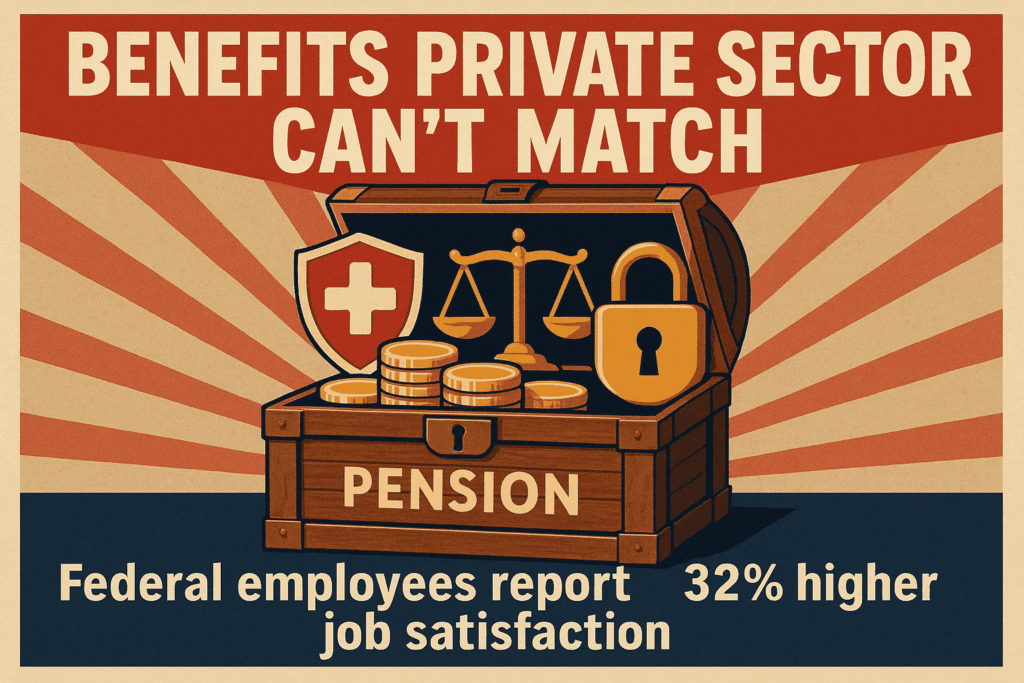
In today’s unpredictable job market, more Americans are discovering the unmatched advantages of federal government employment. These positions offer something increasingly rare in the private sector: true stability combined with exceptional benefits and meaningful work. Let’s explore why so many professionals are choosing this career path and why you might want to consider it too.
Unshakable Job Security in Any Economy
Unlike the rollercoaster of tech layoffs and corporate downsizing we’ve seen in recent years, federal jobs provide remarkable stability. During the 2008 financial crisis and the COVID-19 pandemic, while private sector workers faced massive layoffs, federal employees enjoyed near-ironclad job protection. This resilience comes from the government’s continuous need to serve the public regardless of economic conditions. For workers tired of the “last hired, first fired” private sector mentality, this security can be life-changing.
Compensation That Actually Keeps Up With Life
Federal salaries might surprise those who assume government work means lower pay. The General Schedule (GS) pay system ensures transparent, competitive wages that increase with experience and promotion. A GS-12 employee in Washington, DC, for example, earns between 94,199 and 122,459 annually—comparable to many private sector management positions. But the real value comes in the benefits package:
- Health insurance options that continue into retirement
- The Thrift Savings Plan (TSP), often called the government’s 401(k), with matching contributions
- Pension benefits that have virtually disappeared from private industry
- Generous leave policies combining vacation, sick days, and federal holidays
A Ladder You Can Actually Climb
The federal government operates on a merit-based promotion system that rewards performance rather than office politics. Clear career tracks like the General Schedule (GS) system mean you can realistically plan your advancement years in advance. Many agencies offer:
- Tuition reimbursement for continuing education
- Leadership development programs for high-potential employees
- Detailed career maps showing exactly what it takes to reach each level
- Interagency mobility allowing moves between departments without starting over
Work-Life Balance You Can Count On
While Silicon Valley brags about nap pods and free snacks, federal agencies deliver real work-life benefits that matter:
- Telework options that became permanent at many agencies post-pandemic
- Flexible schedules, including compressed workweeks
- Actual 40-hour workweeks without unpaid overtime expectations
- Family-friendly policies like paid parental leave and childcare subsidies
Making a Difference Where It Counts
Beyond the practical benefits, federal work offers something increasingly rare: the chance to contribute to meaningful projects that impact millions. Whether it’s protecting national parks, advancing medical research, or ensuring food safety, these roles provide purpose beyond profit margins. As one EPA employee told us, “I go home knowing my work helped keep drinking water safe for an entire city—that’s not something you get from selling ads.”
For skilled professionals seeking high-paying jobs in the USA that combine financial security with personal fulfillment, federal employment deserves serious consideration. In our next section, we’ll break down exactly how to navigate the application process to turn this opportunity into reality.
Understanding the Federal Job Market Trends
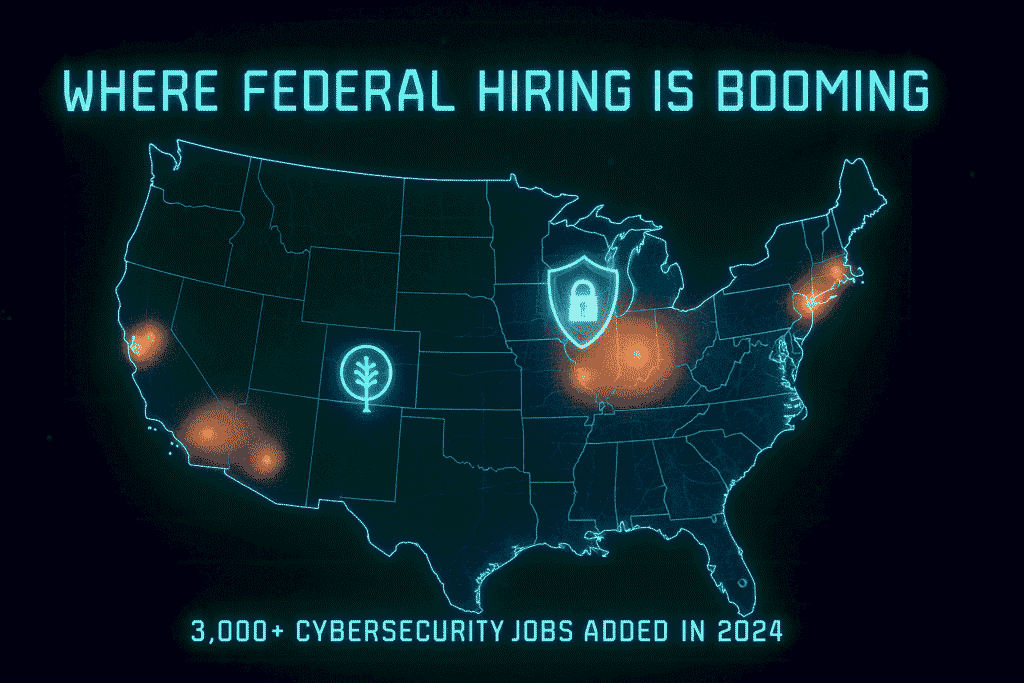
If you’re considering a federal government career, understanding current hiring trends could mean the difference between a frustrating job search and landing your dream position. The federal job market is undergoing significant transformations, with certain fields experiencing explosive growth while new work arrangements make these jobs more accessible than ever before.
The Tech Boom in Government Hiring
While Silicon Valley dominates tech headlines, some of the most exciting opportunities for IT professionals are actually within federal agencies. The Department of Defense recently announced plans to hire over 3,000 cybersecurity specialists in 2024 alone, responding to growing threats from foreign hackers and ransomware attacks. Positions like Information Security Analysts (GS-2210 series) now command salaries competitive with private sector tech giants, especially when you factor in the superior benefits and job security.
What makes these roles particularly appealing is the hands-on experience with cutting-edge systems. “Working as a cybersecurity specialist for Homeland Security gives me access to threat intelligence you simply can’t get in corporate security,” shares Mark R., a former private sector IT manager who transitioned to federal service last year.
Healthcare Hiring at Record Levels
The pandemic created lasting changes in public health infrastructure, with agencies like the CDC and NIH expanding their workforce to prepare for future health crises. The Veterans Health Administration continues to be one of the nation’s largest employers of medical professionals, offering:
- Signing bonuses up to $30,000 for certain specialties
- Student loan repayment programs
- Unique clinical experiences treating veteran populations
Recent nursing graduates might be surprised to learn that federal nurses often earn 10-15% more than their hospital counterparts when considering locality pay adjustments and overtime rules.
The Remote Work Revolution in Government
Contrary to the outdated image of bureaucrats in cubicles, many federal agencies now embrace flexible work arrangements. The Office of Personnel Management reports that over 40% of eligible federal positions now offer regular telework options, with certain agencies like the Patent and Trademark Office leading the way in fully remote positions.
This shift has created new opportunities for candidates outside traditional government hubs like Washington, D.C. A recent hire at the Social Security Administration shared, “I process disability claims from my home office in rural Montana—something that would have been impossible five years ago.”
Veterans: Your Service Opens Doors
The federal government’s commitment to hiring veterans isn’t just lip service. Special hiring authorities like Veterans’ Preference and the Veterans Recruitment Appointment (VRA) program give qualified veterans a significant advantage. In 2023, veterans accounted for nearly 30% of all new federal hires, with particularly strong placement in:
- Law enforcement (Border Patrol, FBI Police)
- Engineering roles with the Army Corps of Engineers
- Logistics positions across multiple agencies
Why These Trends Matter for Your Job Search
Understanding these shifts allows you to
- Focus your efforts on high-growth fields with more openings.
- Tailor your resume to highlight in-demand skills.
- Consider geographic flexibility given new remote options.
- Leverage any veteran status to maximum advantage.
As we’ll explore in the next section, knowing where to look for these opportunities is just as important as understanding what’s available. The federal job search process has its own unique rhythms and requirements that differ significantly from private sector hiring.
How to Find Federal Government Jobs

A different strategy is needed while looking for federal jobs than when looking for a career in the private sector. The government’s hiring system operates on its own timeline and platforms, which can feel overwhelming to newcomers. But with the right strategy, you can uncover hundreds of opportunities that most candidates never discover.
The Essential Starting Point: USAJOBS.gov
Every federal job search should begin at the official USAJOBS.gov portal, which lists nearly all available positions across hundreds of agencies. What most applicants don’t realize is that the platform offers powerful search features that can dramatically improve your results:
- Advanced Filters: Narrow searches by salary range, work schedule (full-time/part-time), or specific hiring paths like “Recent Graduates” or “Individuals with Disabilities.”
- Saved Searches: Set up automated email alerts for new postings matching your criteria.
- Application History: Track every submission in one centralized dashboard.
Pro Tip: Create your USAJOBS account well before applying. The profile setup process requires careful attention to detail, including veterans’ preference documentation and occupational questionnaire responses.
Going Direct: Agency-Specific Hiring Portals
While USAJOBS covers most openings, some high-profile agencies maintain separate career sites with exclusive listings:
- Intelligence Community (CIA, NSA): intelligencecareers.gov
- Federal Bureau of Investigation: FBIjobs.gov
- NASA: NASA.gov/careers
- State Department: Careers.state.gov
These specialized portals often feature
- More detailed position descriptions
- Agency-specific application requirements
- Insider tips for successful applications
The Hidden Job Market: Networking & Events
Many of the best federal opportunities never get publicly posted. Savvy job seekers tap into these unadvertised openings through:
- Federal Career Fairs: Virtual and in-person events where you can speak directly with hiring managers
- LinkedIn Networking: Following agency pages and connecting with current employees
- Professional Associations: Groups like the National Association of Government Employees often share job leads.
Alternative Pathways Worth Exploring
Beyond traditional job postings, consider these routes into federal service:
- Recent Graduate Programs: Special hiring tracks for those who completed degrees within the past two years
- The Presidential Management Fellows Program offers advanced degree holders a chance to strengthen their leadership skills.
- Veteran-Specific Hiring Authorities: Including VRA appointments that bypass competitive hiring
For a comprehensive list of job search resources beyond government sites, our guide to the best websites to apply for jobs in the USA covers additional platforms that aggregate federal openings along with state and local government positions.
Timing Your Search for Maximum Results
Federal hiring follows distinct cycles you should understand:
- End of Fiscal Year (August-September): Agencies rush to fill remaining budgeted positions.
- New Fiscal Year (October): Fresh budgets create new openings.
- Post-Election Periods: Administration changes often lead to hiring surges.
By combining these search strategies with an understanding of hiring cycles, you’ll position yourself ahead of applicants who simply react to random job postings. In our next section, we’ll break down how to transform these findings into successful applications.
Step-by-Step Federal Job Application Process
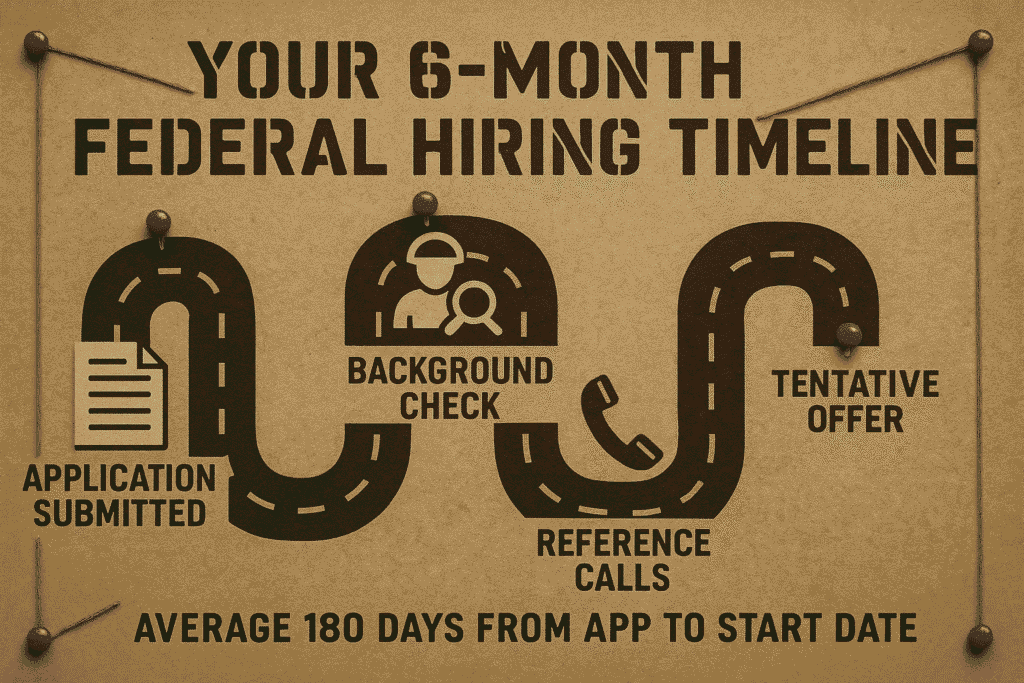
Navigating the federal hiring system can feel like decoding a complex puzzle, but understanding each step can significantly increase your chances of landing a government position. Let me walk you through the proven process that has helped countless applicants transition into stable federal careers.
Step 1: Building Your USAJOBS Foundation
Your journey begins at USAJOBS.gov, the government’s centralized employment portal. Creating an account here is more involved than typical job sites—it’s essentially your professional passport to federal employment. Take time to:
- Complete every section of your profile with meticulous accuracy.
- Upload multiple resume versions tailored to different job series.
- Configure email alerts using specific keywords related to your target positions.
Many applicants don’t realize that your USAJOBS profile remains active indefinitely, becoming more valuable as you add qualifications and update your experience.
Step 2: Strategic Job Searching
With thousands of postings available at any given time, effective searching separates successful applicants from frustrated ones. The most effective strategy combines
- Keyword Optimization: Use the exact terminology from your target position descriptions.
- Series Number Focus: Search by occupational series (like GS-0343 for program analysts).
- Filter Mastery: Narrow results by:
- Hiring path (recent grad, veteran, etc.)
- Travel requirements
- Security clearance level
Always scrutinize the “Who May Apply” section—this determines if you’re even eligible before investing time in an application.
Step 3: Preparing a Winning Application Package
Federal applications require more documentation than private sector jobs. A complete package typically includes
- Federal Resume: 3-5 pages detailing every relevant qualification (unlike private sector 1-page resumes)
- KSAs or Competencies: Narrative responses addressing key skills
- Supporting Documents: Often including:
- Transcripts (even for experienced professionals)
- Veteran preference documentation (DD-214)
- Professional certifications
Pro Tip: Start collecting these documents now—waiting until you find the perfect posting may cause you to miss deadlines.
Step 4: Submission Timing Matters
The government’s strict deadlines aren’t suggestions—they’re absolute cutoffs. To avoid last-minute disasters:
- Submit at least 48 hours before the deadline.
- Time zone differences should be taken into consideration (usually, deadlines are Eastern Time).
- Confirm receipt emails from both USAJOBS and the agency’s system.
Step 5: The Waiting Game and Follow-Up
After submission, the process moves through several stages:
- HR Review: 2-8 weeks for initial qualification checks
- Hiring Manager Review: Additional 2-4 weeks for top candidates
- Interview Phase: Typically 1-3 months post-application
While USAJOBS shows basic status updates, don’t hesitate to contact the HR representative listed on the job announcement after 6-8 weeks for updates.
Bonus Step: Building on Rejections
Even unsuccessful applications serve a purpose—they help you:
- Identify gaps in your qualifications.
- Refine your application strategy.
- Establish eligibility for future similar postings.
Remember, persistence pays off in federal hiring. Many successful applicants report applying to 15-20 positions before receiving an offer.
Writing a Winning Federal Resume
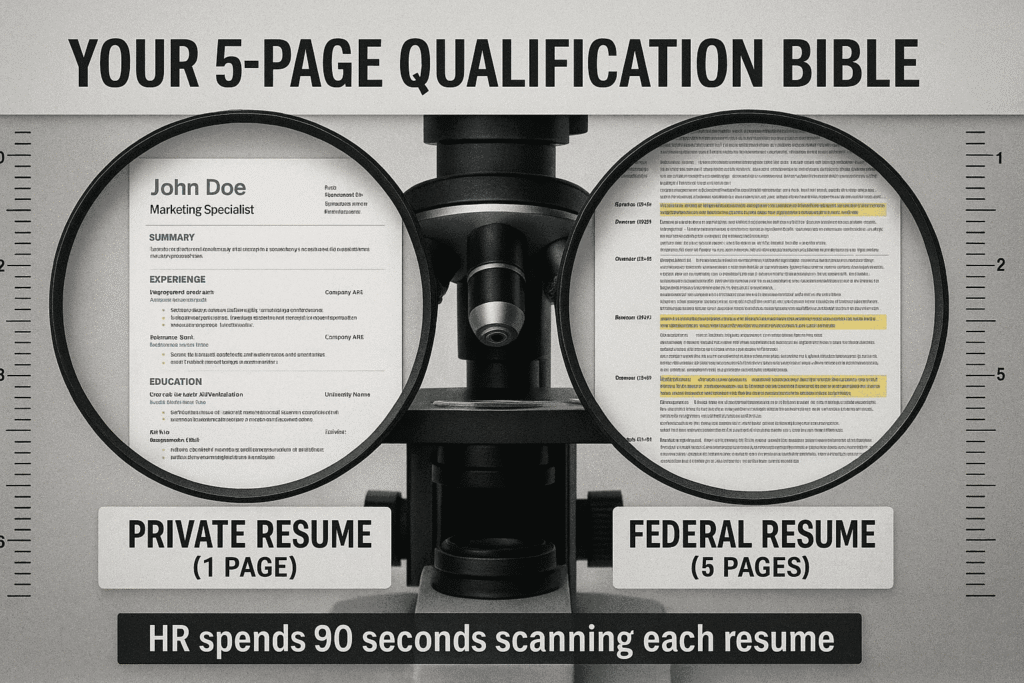
If you’re used to private-sector resumes, prepare for a paradigm shift. Federal resumes aren’t just documents—they’re comprehensive qualification statements that determine whether you’ll make it past the first round of government hiring. Let me walk you through the proven strategies that help applicants create resumes that actually get noticed.
The Critical Differences Between Federal and Private Resumes
Unlike the sleek one-page resumes favored by corporations, federal resumes are detailed career histories that typically span 3-5 pages. This isn’t bureaucracy gone wild—it’s because HR specialists need to verify you meet very specific qualification requirements. Here’s what sets them apart:
Required Elements You Can’t Skip:
- Exact dates of employment (month/year to month/year)
- Hours worked per week for each position
- Supervisor contact information (yes, really)
- Salary history for each role
The Keyword Matching Game:
- HR specialists literally check off required skills from the job announcement.
- Missing just one key phrase can disqualify you.
- Your resume must mirror the language used in the vacancy announcement.
Mastering the USA JOBS Resume Builder
While you can upload your own format, the USAJOBS resume builder ensures you include all mandatory elements. Here’s how to use it effectively:
- Section-by-Section Guidance: The builder walks you through each required component.
- Automatic Formatting: Eliminates worries about margins or font sizes
- Easy Updates: Lets you quickly tailor resumes for different positions
Pro Tip: Create multiple resume versions in the builder for different job series (e.g., one for project management roles, another for policy analysis).
The Art of Keyword Optimization
Your resume must pass through two critical gates:
- Automated Systems: Screen for basic qualifications
- Human Reviewers: Verify you truly meet requirements.
To succeed at both:
- Print out the job announcement and highlight every required skill/qualification.
- Incorporate these exact phrases throughout your resume.
- Use the “Specialized Experience” section to explicitly match requirements.
Example: If the announcement seeks “experience analyzing workforce data,” don’t say “worked with HR metrics”—use their exact wording.
Quantifying Your Impact (With Real Examples)
Vague descriptions kill federal resumes. Instead, use the CAR method:
Challenge—Action—Result
Weak: “Managed projects”
Strong: “Directed 12-person cross-functional team (Challenge) to implement new financial tracking system (Action), reducing reporting errors by 42% and saving 200 staff hours monthly (Result).”
Other quantification strategies:
- Budgets managed (“Oversaw $2.5M annual program budget”)
- People supervised (“Led team of 8 contract specialists”)
- Efficiency gains (“Reduced processing time from 14 to 3 days”)
- Scale indicators (“Served 5,000+ annual clients”)
Special Sections That Give You an Edge
Don’t overlook these resume boosters:
- Training/Certifications: List every relevant course—federal jobs value continuous learning.
- Volunteer Work: Can demonstrate skills if your paid experience is light.
- Clearance Status: If you already hold a clearance, highlight this prominently.
Common Mistakes That Get Resumes Rejected
- Using private-sector templates (they miss required elements)
- Submitting the same resume for different job series
- Omitting dates/hours worked (automatic disqualification)
- Failing to prove you meet specialized experience requirements
Remember: Your federal resume isn’t just about getting an interview—it’s your ticket past the initial HR screening. Take the time to do it right, and you’ll immediately stand out from applicants who treat it like just another job application.
Crafting a Strong Cover Letter
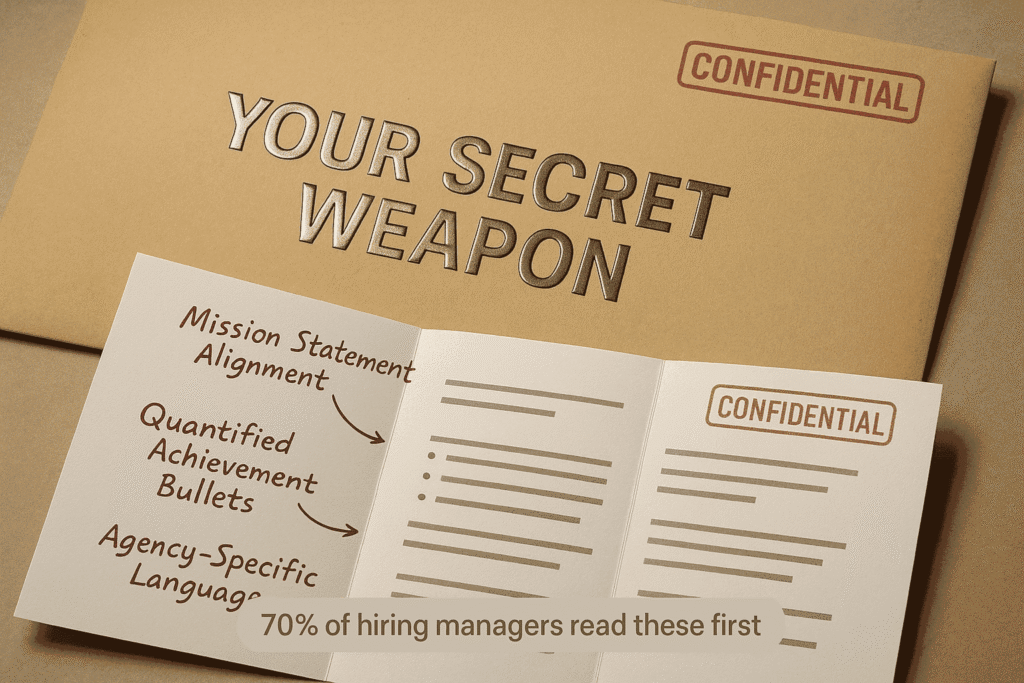
While many applicants focus solely on their federal resume, a well-crafted cover letter can be your secret weapon in the competitive government hiring process. Unlike private sector cover letters that often get skimmed, federal hiring managers frequently use these documents to gauge an applicant’s communication skills and genuine interest in public service.
Why Federal Cover Letters Matter More Than You Think
In a system where resumes must follow strict formats, your cover letter represents one of the few opportunities to:
- Showcase your personality beyond bullet points.
- Demonstrate your writing ability (critical for many federal roles).
- Explain any unique circumstances (career changes, employment gaps).
- Emphasize how the agency’s mission and your values coincide.
Finding the Right Hiring Manager’s Name
“To Whom It May Concern” simply won’t cut it in today’s competitive federal job market. Here’s how to uncover the right contact:
- Check the Job Announcement: Some now list the HR specialist’s name.
- Agency Website: Look for division/department leadership pages.
- LinkedIn Search: Filter by agency and “hiring manager” titles.
- Phone Call: A polite inquiry to the agency’s main line can often yield results.
When you absolutely can’t find a name, “Dear Selection Committee” works better than generic salutations.
Structuring Your Letter for Maximum Impact
A winning federal cover letter follows this proven structure:
1. The Hook (First Paragraph)
- Mention the exact job title and vacancy number.
- State why this particular role excites you.
- Reference any personal connection to the agency’s work.
Example: “As a Navy veteran who benefited from VA healthcare, I’m particularly motivated to apply for the Health Systems Specialist position (Vacancy #CBHT-123456) where I can contribute to improving care for fellow veterans.”
2. The Match (Middle Paragraphs)
- Select 2-3 key requirements from the job announcement.
- For each, provide a specific accomplishment that proves your qualification.
- Use numbers and metrics wherever possible.
3. The Close (Final Paragraph)
- Reaffirm your enthusiasm.
- Mention any unique qualifications.
- Include availability for interviews.
- Thank them for consideration.
The Dos and Don’ts of Federal Cover Letters
What Works:
- ✓ Keeping it to 3-4 substantial paragraphs (never exceeding one page)
- ✓ Using the agency’s mission statement language
- ✓ Showing knowledge of current agency initiatives
- ✓ Matching the tone of the organizational culture (more formal for DOJ, slightly more conversational for EPA)
What Fails:
- ✗ Rehashing your entire resume
- ✗ Using generic “I’m a hard worker” statements
- ✗ Including personal information unrelated to the job
- ✗ Making spelling/grammar errors (instant credibility killer)
Special Considerations for Federal Applications
- Veterans: Briefly mention your service in the opening.
- Career Changers: Describe transferable talents in the cover letter.
- Recent Grads: Highlight relevant coursework and internships.
- Remote Positions: Demonstrate your self-management skills.
Remember: Your cover letter is the first writing sample hiring managers see. Make every word count by showing not just what you’ve done, but how your unique experiences prepare you to solve their specific challenges.
Preparing for the Federal Job Interview

Landing a federal job interview is a significant achievement, but the real challenge begins now. Government interviews differ markedly from private sector ones, combining behavioral questions, technical evaluations, and often panel formats that can intimidate even experienced professionals. Let me walk you through exactly how to prepare for this make-or-break opportunity.
Deep Dive Agency Research: Going Beyond the Basics
Simply skimming an agency’s “About Us” page won’t cut it in today’s competitive federal hiring environment. You need to demonstrate genuine understanding of:
1. Current Strategic Priorities
- Review the agency’s most recent strategic plan (usually available on their website).
- Identify 2-3 key initiatives mentioned in the latest budget justification.
- Note any congressional testimony from agency leaders about current challenges.
2. Recent News and Controversies
- Search news sites for the agency name + “2024.”
- Follow the agency’s social media accounts for the latest updates.
- Check GAO reports for any recent audits or recommendations.
3. Organizational Culture Cues
- Look for employee testimonials on platforms like Glassdoor.
- Notice language used in press releases (formal vs. conversational).
- Identify recurring themes in the agency’s public messaging.
Pro Tip: Create a one-page cheat sheet with key facts, names of leadership, and current priorities to review right before your interview.
Mastering the STAR Method for Behavioral Questions
Federal interviews heavily rely on behavioral questions to assess competencies. The STAR (Situation, Task, Action, Result) technique is your best friend, but proper execution requires nuance:
Common Federal Behavioral Questions:
- “Give an example of a time you had to adjust to new policies.“
- “Describe a disagreement you had with a coworker and how you handled it.“
- “Provide an instance when you enhanced a procedure.“
Advanced STAR Techniques:
- Quantify Everything:
“The new filing system I implemented (Action) reduced processing time by 30% (Result), saving approximately 15 staff hours per week.” - Highlight Transferable Skills:
Even if your experience isn’t government-specific, show how it applies:
“Managing inventory for a retail chain (situation) taught me supply chain principles directly applicable to your logistics specialist position.” - Prepare Multiple Examples:
Have 8-10 STAR stories ready that cover- Leadership
- Problem-solving
- Teamwork
- Compliance
- Innovation
Virtual Interview Essentials for Federal Jobs
With many agencies continuing remote hiring, your digital presentation matters more than ever:
Technical Setup:
- Use a neutral virtual background or tidy physical space.
- Position your camera at eye level.
- Use the same platform that will be used for the interview to test your connection.
Professional Presentation:
- Business formal attire (same as in-person)
- Minimal jewelry and accessories
- Neutral colors that look good on camera
Engagement Techniques:
- Maintain eye contact by looking at the camera.
- Have a notepad ready (but avoid excessive note-taking).
- Smile naturally and nod to show active listening.
The Hidden Aspects of Federal Interviews
- Panel Interviews Are Common:
- Address your answer to the person who asked, but make occasional eye contact with others.
- Note each panelist’s name and title at the start.
- Writing Tests May Be Included:
- Some positions require on-the-spot memo writing or document analysis.
- Security Questions Will Come Up:
- Be prepared to discuss any past legal or financial issues transparently.
- Timing is Everything:
- Arrive 15 minutes early for in-person
- Log in 10 minutes early for virtual
- Expect possible delays (government schedules often run behind).
Post-Interview Strategy
Your work isn’t done when the interview ends:
1. Send Customized Thank-Yous:
- Email each interviewer within 24 hours.
- Reference specific discussion points.
- Reaffirm your interest.
2. Document Your Responses:
- Write down every question asked.
- Note which answers felt strongest/weakest.
- Update your preparation materials accordingly.
3. Follow Up Strategically:
- Wait 2 weeks before checking status.
- Contact the HR specialist listed in the announcement.
- Express continued enthusiasm while inquiring.
Remember: Federal hiring moves slowly. Even if you nailed the interview, it may take weeks or months to hear back. Use this time to continue applying for other positions while staying engaged with this opportunity.
Common Mistakes to Avoid in Federal Job Applications
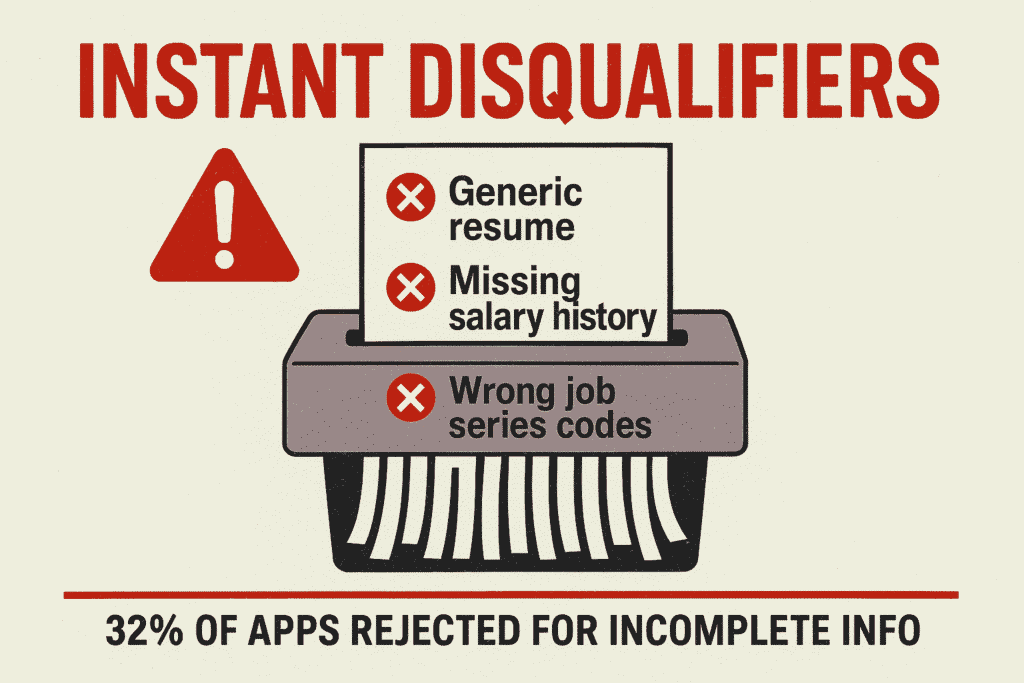
After reviewing thousands of federal job applications as a former HR specialist, I’ve seen the same preventable errors knock out qualified candidates time and again. These aren’t minor oversights—they’re application killers that can sabotage your chances before a human ever reviews your materials. Let me walk you through the most damaging mistakes and exactly how to steer clear of them.
1. The Fatal Error of Skimming Job Announcements
Federal job postings contain specific codes and requirements that function like a secret language. Missing just one can automatically disqualify you. Here’s what to scrutinize:
- Specialized Experience Requirements: These aren’t suggestions—they’re absolute minimums.
- Who May Apply Sections: Determines if you’re even eligible before applying
- Required Documents Checklist: Often includes unexpected items like college transcripts.
- Assessment Questionnaire: Some require separate written responses.
Real-World Example: A cybersecurity specialist with 10 years of experience was rejected because the announcement required “experience with NIST frameworks,” and he simply listed “security frameworks” instead of using the exact terminology.
2. The Generic Resume Trap
Federal resumes require customisation, but resumes from the private sector might be more flexible. The most successful applicants:
- Create multiple resume versions for different job series.
- Mirror the exact wording from each job announcement.
- Adjust their “Specialized Experience” section for every application.
- Indicate the proportion of time spent on each pertinent task.
Pro Tip: Keep a master resume with all possible details, then trim and tailor for each submission rather than starting from scratch.
3. The Perils of Last-Minute Submissions
Government application systems are notoriously unforgiving with deadlines. Unlike private sector roles that might accept late materials, federal HR systems:
- Automatically close at the posted time (often midnight ET)
- May experience heavy traffic in final hours
- Require complete packages—partial submissions don’t count.
Strategic Approach:
- Submit at least 72 hours before deadlines.
- Account for time zone differences.
- Verify all documents uploaded correctly.
- Keep confirmation emails as proof of submission.
4. Overlooking the Hidden Application Components
Many applicants focus solely on the resume while missing other critical elements:
- Occupational Questionnaires: These scored assessments can make or break your application.
- KSAs (Knowledge, Skills, Abilities): Some positions still require separate statements.
- Transcript Requirements: Even senior professionals often need to submit college records.
5. The Veterans Preference Paperwork Pitfall
Veterans frequently miss out on their earned advantages by:
- Not submitting DD-214 with correct character of service
- Failing to claim preference during application
- Missing deadlines for submitting supporting documents
6. Underestimating the Importance of Formatting
Federal HR systems often parse resumes electronically. Avoid:
- Fancy graphics or tables that scanners can’t read
- Abbreviations that might not be universally understood
- Condensed timelines that make experience verification difficult
The Consequences Are Real
These aren’t hypothetical scenarios. In a recent hiring cycle for 50 positions at a cabinet-level agency:
- 32% of applicants were rejected for incomplete packages.
- 28% failed to meet specialized experience requirements.
- 12% missed the submission deadline by minutes.
The good news? By being meticulous and methodical, you can avoid these pitfalls and position yourself in that coveted group of applicants who make it to the interview stage.
FAQs About Federal Government Jobs

Navigating the federal hiring process can feel like trying to solve a complex puzzle. After helping hundreds of applicants land government positions, I’ve compiled the most common questions—along with insider insights you won’t find in official handbooks. Let’s demystify the process together.
1. The Federal Hiring Timeline: Why Patience is Essential
While private sector jobs might fill positions in weeks, federal hiring operates on a different clock. Here’s what to expect:
- Initial Application Review: 4-8 weeks after closing date
- Interview Phase: Typically occurs 2-3 months post-application
- Tentative Offer to Final Offer: 1-2 months for background checks
- Onboarding Process: Another 1-2 months for clearance processing
Pro Tip: The fiscal year end (September) often sees accelerated hiring as agencies rush to spend remaining budgets, while January-February tends to be slower.
2. Education vs. Experience: Breaking Down Requirements
Federal positions take a more flexible approach to qualifications than many realize:
- Professional/Scientific Positions: Usually require specific degrees
- Administrative/Technical Roles: Often accept experience substitutions
- Specialized Fields: May require certifications (e.g., PE license for engineers)
Key Insight: The “Qualifications” section of each announcement specifies whether education can substitute for experience. A lot of GS-9 through GS-12 jobs require a mix of education and more responsible work experience.
3. Citizenship Requirements: Who Can Apply?
While most federal jobs require U.S. citizenship, there are notable exceptions:
- Non-Citizen Eligibility: Some STEM and medical positions may hire permanent residents.
- Pathways Programs: Recent graduate programs sometimes accept certain visa holders.
- Contractor Roles: Many government contractors can hire non-citizens.
Important Note: Even citizen-required positions may accept applications from those who will naturalize within 6-9 months.
4. Salary Negotiation: Yes, It’s Possible (Within Limits)
Contrary to popular belief, federal salaries aren’t always set in stone:
- Step Increases: Can sometimes negotiate starting at Step 2-10 within a grade
- Superior Qualifications Appointments: May qualify for higher starting steps
- Relocation Incentives: Available for hard-to-fill positions
5. The Truth About Background Investigations
Security clearance processes intimidate many applicants unnecessarily.
- Tiers Vary: From basic public trust to Top Secret SCI
- Timing Differences: Can range from 2 weeks to 18 months
- Common Hurdles: Financial issues (not debts, but unresolved collections) and incomplete foreign contact reporting cause most delays.
6. Telework Realities in Federal Service
Post-pandemic work arrangements vary widely:
- Agency-Specific Policies: Some (like SSA) offer extensive telework; others (like FBI) require on-site
- Geographic Restrictions: Many remote jobs still require living in certain areas.
- Equipment Protocols: Government-issued devices are mandatory for most telework.
7. Veterans Preference: How It Really Works
Understanding these advantages is crucial:
- Point System: 5 or 10 point preferences affect ranking, not guarantees.
- Spouse Benefits: Some military spouses qualify for non-competitive hiring.
- Documentation Requirements: Must submit DD-214 with every application.
8. The Probation Period Reality
New hires should know:
- Standard Period: 1-2 years depending on position
- Rights During Probation: Fewer appeal rights if dismissed
- Conversion Rates: Over 90% successfully complete probation.
9. Promotion Potential: Moving Up the GS Ladder
Career advancement looks different in government:
- Career Ladder Positions: May automatically promote from GS-7 to GS-12
- Time-in-Grade Rules: Typically 52 weeks at current level
- Competitive vs. Non-Competitive Promotions: Understanding the difference is key.
10. Applying After Previous Rejections
Many successful applicants faced multiple rejections first:
- Reapplication Rules: Can typically reapply immediately
- Feedback Options: Some agencies provide application assessments.
- Improvement Strategies: Documenting application history helps identify patterns.
Conclusion
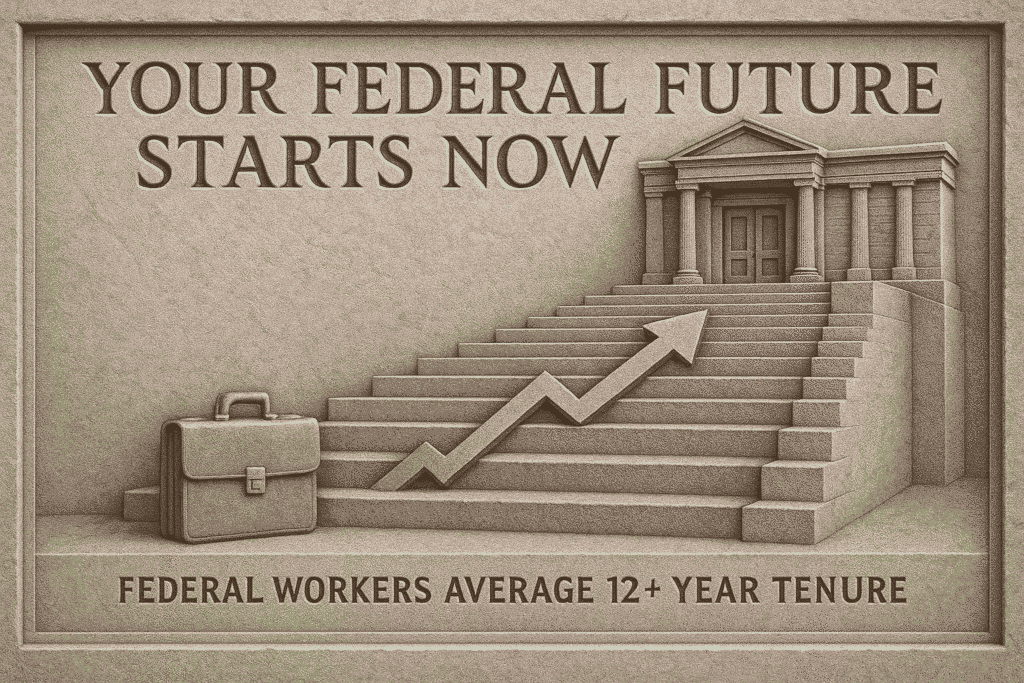
As we wrap up this comprehensive guide, it’s important to recognize that securing a federal government job isn’t just about submitting an application—it’s about embarking on a strategic journey toward meaningful public service. The process may seem daunting at first glance, but thousands of Americans successfully navigate it every year, and with the right approach, you can too.
Why Persistence Pays Off in Federal Hiring
The federal hiring timeline tests many applicants’ patience, but those who persevere find the rewards well worth the effort. Consider Sarah’s story: after applying to 18 positions over nine months, she finally landed her dream job as an environmental protection specialist with the EPA. Today, she enjoys job security she never experienced in the private sector, along with the satisfaction of knowing her work directly impacts communities across the country.
Key Takeaways to Carry Forward
- The Application is Just the Beginning
Treat each submission as the first step in a longer relationship with the agency. Even if you’re not selected immediately, your materials may be kept on file for future openings. - Continuous Improvement Matters
Every application and interview provides valuable lessons. Maintain a journal tracking what works and where you can improve. - Networking Opens Doors
Attend virtual and in-person federal career events. Many successful applicants credit informational interviews with current employees as their breakthrough moment.
Staying Motivated Through the Process
When the waiting seems endless, remember:
- Federal jobs offer unparalleled stability—once you’re in, you’re building a career, not just filling a position.
- The benefits and work-life balance often surpass private sector equivalents.
- Your work will have a tangible impact on your fellow citizens’ lives.
Additional Resources to Explore
To continue your federal job search journey, we recommend:
- Our comprehensive guide to high-paying jobs in the USA for skilled workers, featuring government positions with exceptional earning potential
- The Office of Personnel Management’s (OPM) official hiring resources
- Agency-specific career workshops and webinars
Final Words of Encouragement
The road to federal employment requires dedication, but each carefully crafted application and each interview prepares you better for the next opportunity. Remember that every current federal employee was once in your position—facing the same challenges and uncertainties. With the strategies outlined in this guide, you’re already ahead of most applicants.
Your future in public service starts today. Take that next step—whether it’s polishing your resume, attending a virtual hiring event, or simply setting a weekly goal for applications. The perfect federal position is out there waiting for the right candidate. Why shouldn’t that be you?

